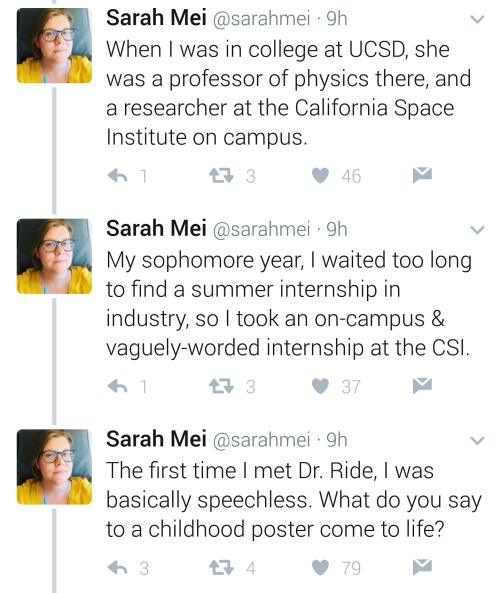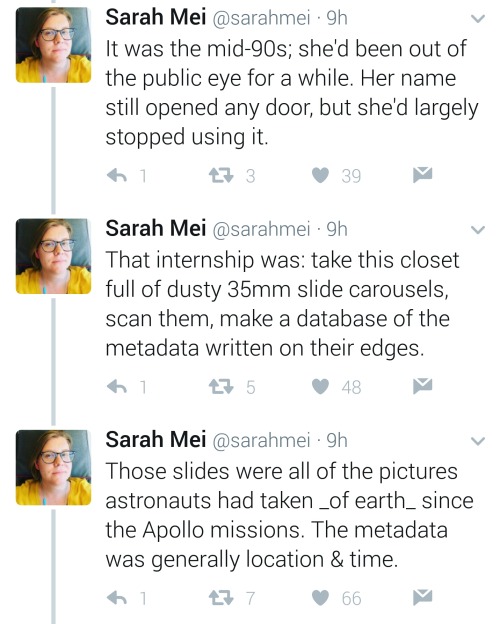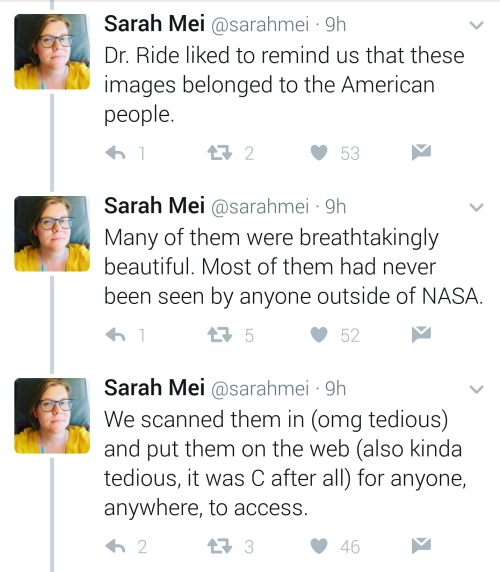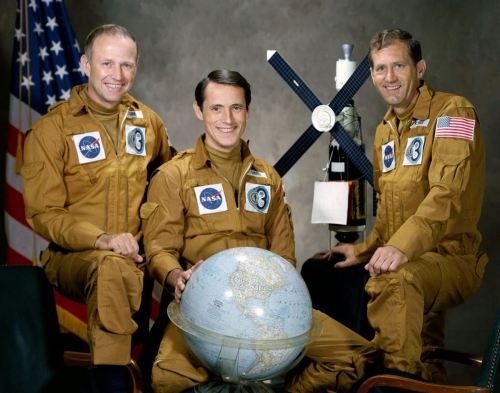Light Echoes Used To Study Protoplanetary Disks : This Illustration Shows A Star Surrounded By A Protoplanetary

Light Echoes Used to Study Protoplanetary Disks : This illustration shows a star surrounded by a protoplanetary disk. A new study uses data from NASAs Spitzer Space Telescope and four ground-based telescopes to determine the distance from a star to the inner rim of its surrounding protoplanetary disk. Researchers used a method called photo-reverberation, also known as light echoes.
js
More Posts from Fillthevoid-with-space and Others

Hubble Showcases a Remarkable Galactic Hybrid : UGC 12591s classification straddles somewhere between a lenticular and a spiral galaxy. It lies just under 400 million light-years from us in the PiscesPerseus Supercluster.
js




Check out the makeshift pinhole-camera results from 99% totality! Leaves and my own hands work quite nicely to get an image of the little sliver of sunlight that was left. I had eclipse glasses but don't have any pictures from them: 99% is still not enough to reduce the sun's light very much. It got a little gloomier and I talked about it on Twitter but otherwise it was pretty uneventful! I'm glad I'm not on the road home from eclipsing. It would be cool to see totality one day, though.

I imagine most people wanted to be astronauts when they learned it was a job they could have - I certainly did! And then I thought about it and realized podcasting about outer space was much less scary and much more achievable than becoming an astronaut, with the bonus of not having to wonder how hard I’d panic in an enclosed-yet-surrounded-by-vastness space. There have been a lot of people braver than me who went to space, and some of them went to space on long-term missions lasting months or a year, living on the International Space Station (or the historical equivalent, depending on when in history this happened). Learn what resources are available to ISS astronauts, and what risks there are out there (apart from the obvious ones).
Sorry I missed last week, but it was New Year’s and I don’t feel very guilty. Get excited about more space podcasts in 2018, though! Below the cut are my sources, music credits, a vocab list, and the transcript of this episode. I bolded any videos or sources that I mentioned in the podcast, if you’re looking for those specifically. Go ahead and suggest what you think I should research next by messaging me here, tweeting at me at @HDandtheVoid, or asking me to my face if you know me. Please subscribe on iTunes, rate it and maybe review it, and tell friends if you think they’d like to hear it!
(My thoughts on the next episode are more about astronauts, or I could go into the transit of Venus. I have a couple books about space I should really get into reading… The next episode will go up January 22nd.)
Glossary
free fall - the downward movement of an object that is due to the force of gravity alone.
gravity - the phenomenon which causes all things with mass to move towards each other. On the universal scale, this is caused by the warping of spacetime by objects with large mass, e.g. stars and planets, and is explained through Einstein’s theory of general relativity.
microgravity - the state of perpetual free fall in a gravity field.
orbit - the gravitationally curved trajectory of an object, e.g. the trajectory of a satellite around a planet.
Script/Transcript
Sources
Yuri Gagarin via NASA
Microgravity via NASA (Feb 2012)
The history of astronaut life via the Smithsonian Air and Space Museum
Menstruation in space via National Geographic (Apr 2016)
The Air We Breathe via the Smithsonian Environmental Research Center
Breathing Easy on the Space Station via NASA (Nov 2000)
Jay Perry: “the chemical-mechanical systems are much more compact, less labor intensive, and more reliable than a plant-based system.”
Astronaut’s Home Videos Show How to Cook in Space via Space.com (Mar 2013)
Astronaut Hygiene: How to Wash Your Hair In Space (Video) via Space.com (July 2013)
Interview with former astronaut Prof. Jeremy Hoffman via the University of Leicester
A day in the life aboard the International Space Station via NASA (2015)
Zvezda Module Overview via NASA
Food for Space Flight via Nasa (Feb 2004)
John Glenn via NASA (Feb 2012)
Crew From U.S., Russia and Japan Expands Space Population to Six via NASA (Dec 2017)
ISS blog with experiment updates via NASA
Astronaut daily life via ESA (Nov 2012)
The Skylab 4 Mutiny, 1973 via libcom.org (Apr 2004)
Carr: “On the ground, I don’t think we would be expected to work a 16-hour day for 85 days, and so I really don’t see why we should even try to do it up here.”
‘Space Oddity’ by Chris Hadfield via YouTube
Interview with astronaut Chris Hadfield via NPR (Oct 2013)
Col. Chris Hadfield: “The contrast of your body and your mind inside … essentially a one-person spaceship, which is your spacesuit, where you’re holding on for dear life to the shuttle or the station with one hand, and you are inexplicably in between what is just a pouring glory of the world roaring by, silently next to you — just the kaleidoscope of it, it takes up your whole mind. It’s like the most beautiful thing you’ve ever seen just screaming at you on the right side, and when you look left, it’s the whole bottomless black of the universe and it goes in all directions. It’s like a huge yawning endlessness on your left side and you’re in between those two things and trying to rationalize it to yourself and trying to get some work done.”
Excerpt from memoir by former astronaut Scott Kelly via the Sunday Morning Herald (Oct 2017)
Intro Music: ‘Better Times Will Come’ by No Luck Club off their album Prosperity
Filler Music: ‘Major Tom’ by Shiny Toy Guns off their album Major Tom.
Background Music: ‘Leaves’ by Patients aka Ben Cooper, who primarily releases music as Radical Face but also has at least three other bands or band names he’s working with/has released music as.
Outro Music: ‘Fields of Russia’ by Mutefish off their album On Draught
I talked about spaghettification but someone did one better and made a dang cute comic about it!






Starry Greetings!
This week’s comic: Spaghettification
https://www.youtube.com/watch?v=OGn_w-3pjMc
http://science.howstuffworks.com/science-vs-myth/what-if/what-if-fell-into-black-hole2.htm










Equal opportunity benefits can be far-reaching
https://twitter.com/sarahmei/status/818682610712866817
Space Station Crew Members Walk In Space to Connect Docking Adapter Component
Outside the International Space Station, Expedition 50 Commander Shane Kimbrough and Flight Engineer Peggy Whitson of NASA conducted a spacewalk March 30 to connect the newly relocated Pressurized Mating Adapter-3 (PMA-3) to the Harmony module in preparation for the delivery of an International Docking Adapter to PMA-3 to which U.S. commercial crew spacecraft will link up to in the years ahead. The mating adapter was robotically relocated from the port side of the Tranquility module to Harmony March 26 by ground controllers. Kimbrough and Whitson also installed the second of two upgraded computer relay boxes on the station’s truss and installed shields and covers over PMA-3 and the vacant port on Tranquility to which the PMA had been attached. It was the 199th spacewalk in support of space station assembly and maintenance, the sixth in Kimbrough’s career and the eighth for Whitson, who surpassed NASA’s Suni Williams for most spacewalks and most aggregate spacewalking time by a female.
Stars Born in Winds from Supermassive Black Holes
ESO - European Southern Observatory logo. 27 March 2017 ESO’s VLT spots brand-new type of star formation
Artist’s impression of stars born in winds from supermassive black holes
Observations using ESO’s Very Large Telescope have revealed stars forming within powerful outflows of material blasted out from supermassive black holes at the cores of galaxies. These are the first confirmed observations of stars forming in this kind of extreme environment. The discovery has many consequences for understanding galaxy properties and evolution. The results are published in the journal Nature. A UK-led group of European astronomers used the MUSE and X-shooter instruments on the Very Large Telescope (VLT) at ESO’s Paranal Observatory in Chile to study an ongoing collision between two galaxies, known collectively as IRAS F23128-5919, that lie around 600 million light-years from Earth. The group observed the colossal winds of material — or outflows — that originate near the supermassive black hole at the heart of the pair’s southern galaxy, and have found the first clear evidence that stars are being born within them [1]. Such galactic outflows are driven by the huge energy output from the active and turbulent centres of galaxies. Supermassive black holes lurk in the cores of most galaxies, and when they gobble up matter they also heat the surrounding gas and expel it from the host galaxy in powerful, dense winds [2]. “Astronomers have thought for a while that conditions within these outflows could be right for star formation, but no one has seen it actually happening as it’s a very difficult observation,” comments team leader Roberto Maiolino from the University of Cambridge. “Our results are exciting because they show unambiguously that stars are being created inside these outflows.”
Artist’s impression of stars born in winds from supermassive black holes
The group set out to study stars in the outflow directly, as well as the gas that surrounds them. By using two of the world-leading VLT spectroscopic instruments, MUSE and X-shooter, they could carry out a very detailed study of the properties of the emitted light to determine its source. Radiation from young stars is known to cause nearby gas clouds to glow in a particular way. The extreme sensitivity of X-shooter allowed the team to rule out other possible causes of this illumination, including gas shocks or the active nucleus of the galaxy. The group then made an unmistakable direct detection of an infant stellar population in the outflow [3]. These stars are thought to be less than a few tens of millions of years old, and preliminary analysis suggests that they are hotter and brighter than stars formed in less extreme environments such as the galactic disc. As further evidence, the astronomers also determined the motion and velocity of these stars. The light from most of the region’s stars indicates that they are travelling at very large velocities away from the galaxy centre — as would make sense for objects caught in a stream of fast-moving material. Co-author Helen Russell (Institute of Astronomy, Cambridge, UK) expands: “The stars that form in the wind close to the galaxy centre might slow down and even start heading back inwards, but the stars that form further out in the flow experience less deceleration and can even fly off out of the galaxy altogether.” The discovery provides new and exciting information that could better our understanding of some astrophysics, including how certain galaxies obtain their shapes [4]; how intergalactic space becomes enriched with heavy elements [5]; and even from where unexplained cosmic infrared background radiation may arise [6]. Maiolino is excited for the future: “If star formation is really occurring in most galactic outflows, as some theories predict, then this would provide a completely new scenario for our understanding of galaxy evolution.” Notes: [1] Stars are forming in the outflows at a very rapid rate; the astronomers say that stars totalling around 30 times the mass of the Sun are being created every year. This accounts for over a quarter of the total star formation in the entire merging galaxy system. [2] The expulsion of gas through galactic outflows leads to a gas-poor environment within the galaxy, which could be why some galaxies cease forming new stars as they age. Although these outflows are most likely to be driven by massive central black holes, it is also possible that the winds are powered by supernovae in a starburst nucleus undergoing vigorous star formation. [3] This was achieved through the detection of signatures characteristic of young stellar populations and with a velocity pattern consistent with that expected from stars formed at high velocity in the outflow. [4] Spiral galaxies have an obvious disc structure, with a distended bulge of stars in the centre and surrounded by a diffuse cloud of stars called a halo. Elliptical galaxies are composed mostly of these spheroidal components. Outflow stars that are ejected from the main disc could give rise to these galactic features. [5] How the space between galaxies — the intergalactic medium — becomes enriched with heavy elements is still an open issue, but outflow stars could provide an answer. If they are jettisoned out of the galaxy and then explode as supernovae, the heavy elements they contain could be released into this medium. [6] Cosmic-infrared background radiation, similar to the more famous cosmic microwave background, is a faint glow in the infrared part of the spectrum that appears to come from all directions in space. Its origin in the near-infrared bands, however, has never been satisfactorily ascertained. A population of outflow stars shot out into intergalactic space may contribute to this light. More information: This research was presented in a paper entitled “Star formation in a galactic outflow” by Maiolino et al., to appear in the journal Nature on 27 March 2017. The team is composed of R. Maiolino (Cavendish Laboratory; Kavli Institute for Cosmology, University of Cambridge, UK), H.R. Russell (Institute of Astronomy, Cambridge, UK), A.C. Fabian (Institute of Astronomy, Cambridge, UK), S. Carniani (Cavendish Laboratory; Kavli Institute for Cosmology, University of Cambridge, UK), R. Gallagher (Cavendish Laboratory; Kavli Institute for Cosmology, University of Cambridge, UK), S. Cazzoli (Departamento de Astrofisica-Centro de Astrobiología, Madrid, Spain), S. Arribas (Departamento de Astrofisica-Centro de Astrobiología, Madrid, Spain), F. Belfiore ((Cavendish Laboratory; Kavli Institute for Cosmology, University of Cambridge, UK), E. Bellocchi (Departamento de Astrofisica-Centro de Astrobiología, Madrid, Spain), L. Colina (Departamento de Astrofisica-Centro de Astrobiología, Madrid, Spain), G. Cresci (Osservatorio Astrofisico di Arcetri, Firenze, Italy), W. Ishibashi (Universität Zürich, Zürich, Switzerland), A. Marconi (Università di Firenze, Italy; Osservatorio Astrofisico di Arcetri, Firenze, Italy), F. Mannucci (Osservatorio Astrofisico di Arcetri, Firenze, Italy), E. Oliva (Osservatorio Astrofisico di Arcetri, Firenze, Italy), and E. Sturm (Max-Planck-Institut für Extraterrestrische Physik, Garching, Germany). ESO is the foremost intergovernmental astronomy organisation in Europe and the world’s most productive ground-based astronomical observatory by far. It is supported by 16 countries: Austria, Belgium, Brazil, the Czech Republic, Denmark, France, Finland, Germany, Italy, the Netherlands, Poland, Portugal, Spain, Sweden, Switzerland and the United Kingdom, along with the host state of Chile. ESO carries out an ambitious programme focused on the design, construction and operation of powerful ground-based observing facilities enabling astronomers to make important scientific discoveries. ESO also plays a leading role in promoting and organising cooperation in astronomical research. ESO operates three unique world-class observing sites in Chile: La Silla, Paranal and Chajnantor. At Paranal, ESO operates the Very Large Telescope, the world’s most advanced visible-light astronomical observatory and two survey telescopes. VISTA works in the infrared and is the world’s largest survey telescope and the VLT Survey Telescope is the largest telescope designed to exclusively survey the skies in visible light. ESO is a major partner in ALMA, the largest astronomical project in existence. And on Cerro Armazones, close to Paranal, ESO is building the 39-metre European Extremely Large Telescope, the E-ELT, which will become “the world’s biggest eye on the sky”. Links: ESOcast 101 Light: Stars found in black hole blasts http://www.eso.org/public/videos/eso1710a/ Research paper in Nature: http://www.eso.org/public/archives/releases/sciencepapers/eso1710/eso1710a.pdf Photos of the VLT: http://www.eso.org/public/images/archive/category/paranal/ ESO’s Very Large Telescope (VLT): http://www.eso.org/public/teles-instr/paranal-observatory/vlt/ MUSE instrument: http://www.eso.org/public/teles-instr/paranal-observatory/vlt/vlt-instr/muse/ X-shooter instrument: http://www.eso.org/public/teles-instr/vlt/vlt-instr/x-shooter/ Image, Video, Text, Credits: ESO/Richard Hook/Cavendish Laboratory, Kavli Institute for Cosmology University of Cambridge/Roberto Maiolino/M. Kornmesser. Best regards, Orbiter.ch Full article


Happy Labor Day. Today I learned about probably the first strike to happen IN SPACE.






The Meaning of Color in Hubble Images: An interactive slideshow that illustrates how the Hubble Space Telescope incorporates light in multiple wavelengths to produce it’s stunning imagery.
-
 dreamswalker liked this · 4 years ago
dreamswalker liked this · 4 years ago -
 meditationrelaxationmusic reblogged this · 4 years ago
meditationrelaxationmusic reblogged this · 4 years ago -
 im-the-bird liked this · 5 years ago
im-the-bird liked this · 5 years ago -
 teddylou liked this · 5 years ago
teddylou liked this · 5 years ago -
 sillinesssunshineandrainbows liked this · 5 years ago
sillinesssunshineandrainbows liked this · 5 years ago -
 ooclock reblogged this · 5 years ago
ooclock reblogged this · 5 years ago -
 excellentalice liked this · 5 years ago
excellentalice liked this · 5 years ago -
 djbrandhout reblogged this · 5 years ago
djbrandhout reblogged this · 5 years ago -
 djbrandhout liked this · 5 years ago
djbrandhout liked this · 5 years ago -
 awakeless reblogged this · 5 years ago
awakeless reblogged this · 5 years ago -
 bear-maple liked this · 5 years ago
bear-maple liked this · 5 years ago -
 heliofilic reblogged this · 5 years ago
heliofilic reblogged this · 5 years ago -
 heliofilic liked this · 5 years ago
heliofilic liked this · 5 years ago -
 xknzs reblogged this · 5 years ago
xknzs reblogged this · 5 years ago -
 grumpytrans reblogged this · 5 years ago
grumpytrans reblogged this · 5 years ago -
 bubbsy65 liked this · 5 years ago
bubbsy65 liked this · 5 years ago -
 the-network-blog reblogged this · 5 years ago
the-network-blog reblogged this · 5 years ago -
 fanartofthelostcities liked this · 5 years ago
fanartofthelostcities liked this · 5 years ago -
 this-desiccated-corpuscle liked this · 5 years ago
this-desiccated-corpuscle liked this · 5 years ago -
 ohfugecannada liked this · 5 years ago
ohfugecannada liked this · 5 years ago -
 metalzoic reblogged this · 5 years ago
metalzoic reblogged this · 5 years ago -
 skyscrapers-and-tombstones liked this · 5 years ago
skyscrapers-and-tombstones liked this · 5 years ago -
 littledarktiger liked this · 5 years ago
littledarktiger liked this · 5 years ago -
 gia-is-a-punk-rocker liked this · 5 years ago
gia-is-a-punk-rocker liked this · 5 years ago -
 ergoproxy-yep-blog liked this · 5 years ago
ergoproxy-yep-blog liked this · 5 years ago -
 m-l-e-p liked this · 5 years ago
m-l-e-p liked this · 5 years ago -
 asanils reblogged this · 5 years ago
asanils reblogged this · 5 years ago -
 notisaidthechicken liked this · 5 years ago
notisaidthechicken liked this · 5 years ago -
 gestaltico liked this · 5 years ago
gestaltico liked this · 5 years ago -
 anastasiajolean reblogged this · 5 years ago
anastasiajolean reblogged this · 5 years ago -
 anastasiajolean liked this · 5 years ago
anastasiajolean liked this · 5 years ago -
 hollywoodundeadroger liked this · 5 years ago
hollywoodundeadroger liked this · 5 years ago -
 impulsive-astrophile reblogged this · 5 years ago
impulsive-astrophile reblogged this · 5 years ago -
 impulsive-astrophile liked this · 5 years ago
impulsive-astrophile liked this · 5 years ago -
 marcomerlo reblogged this · 5 years ago
marcomerlo reblogged this · 5 years ago -
 marcomerlo liked this · 5 years ago
marcomerlo liked this · 5 years ago -
 saintaleksi reblogged this · 5 years ago
saintaleksi reblogged this · 5 years ago -
 saintaleksi liked this · 5 years ago
saintaleksi liked this · 5 years ago -
 1queer-galaxy1 liked this · 5 years ago
1queer-galaxy1 liked this · 5 years ago -
 galactic-monarch reblogged this · 5 years ago
galactic-monarch reblogged this · 5 years ago -
 galactic-monarch liked this · 5 years ago
galactic-monarch liked this · 5 years ago -
 thespian-witch reblogged this · 5 years ago
thespian-witch reblogged this · 5 years ago -
 spellcastinq reblogged this · 5 years ago
spellcastinq reblogged this · 5 years ago
A podcast project to fill the space in my heart and my time that used to be filled with academic research. In 2018, that space gets filled with... MORE SPACE! Cheerfully researched, painstakingly edited, informal as hell, definitely worth everyone's time.
243 posts
